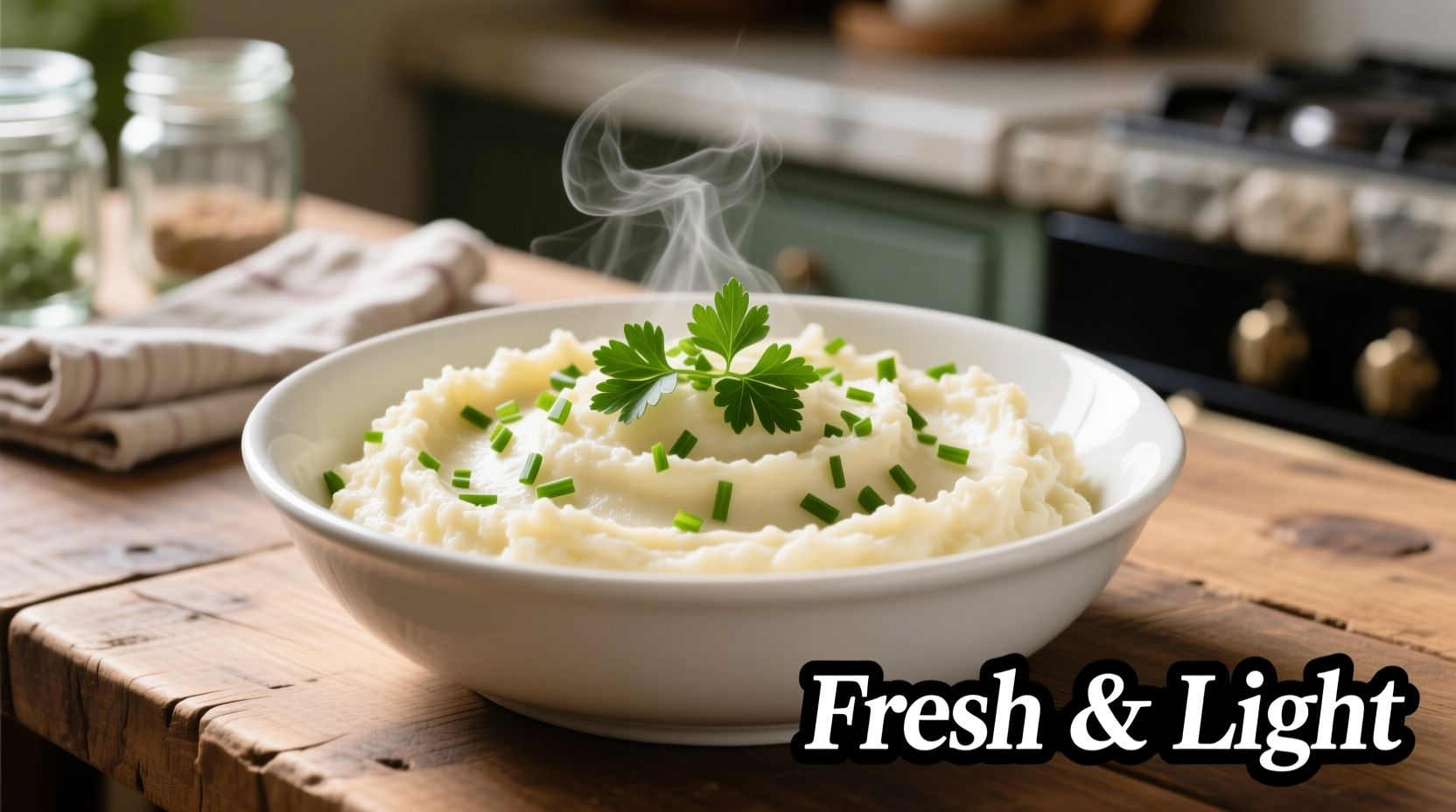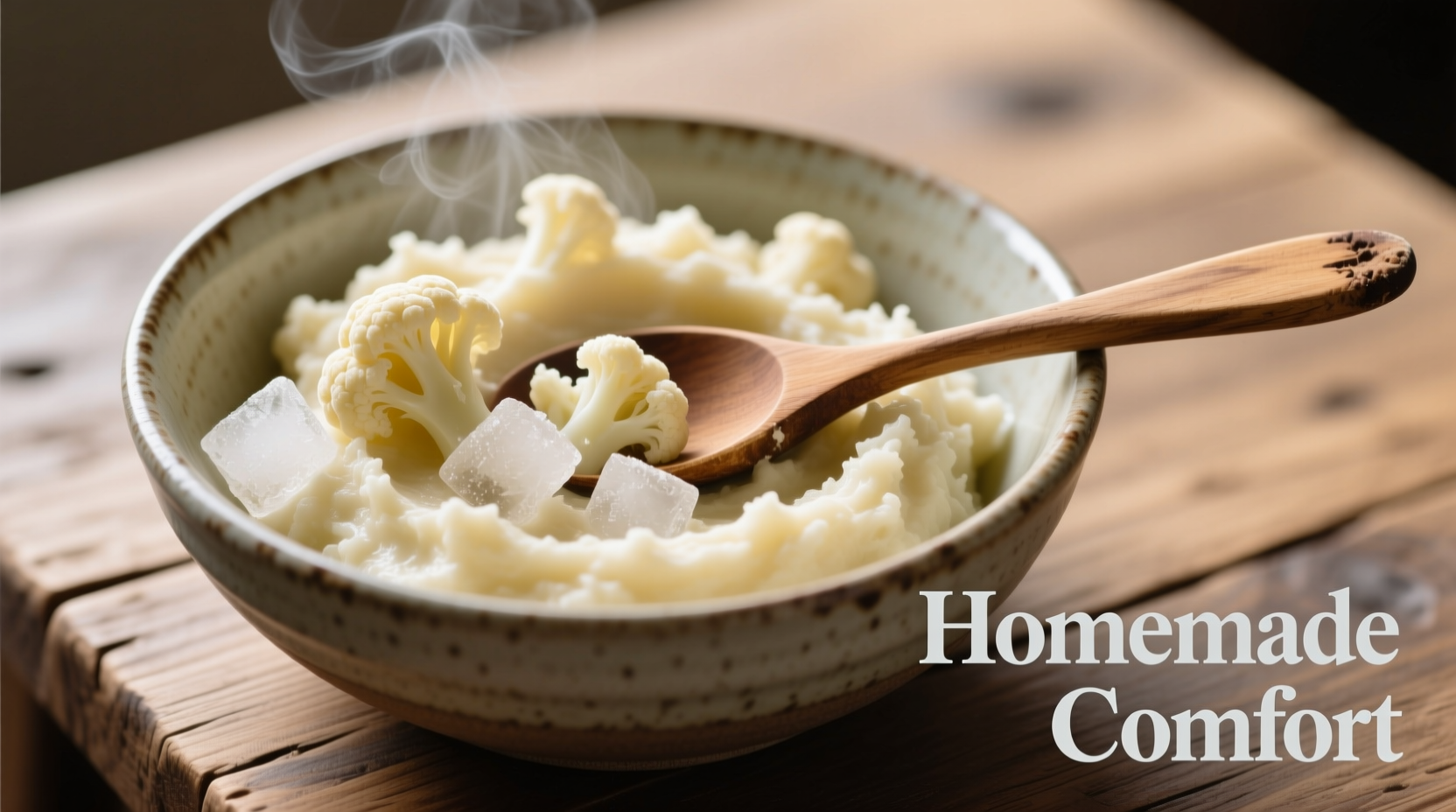The Science Behind Perfect Frozen Cauliflower Mash
Many home cooks avoid frozen cauliflower for mashing, fearing watery or bland results. However, modern flash-freezing technology preserves cauliflower's cellular structure better than older methods. According to USDA Food Safety and Inspection Service research, properly frozen vegetables retain 85-90% of their original nutrients when stored correctly (FSIS, 2023).
The key difference lies in moisture content. Frozen cauliflower contains approximately 15% more water than fresh due to ice crystal formation during freezing. Understanding this simple fact transforms your results from disappointing to restaurant-quality.

Fresh vs Frozen: Texture Comparison
| Characteristic | Fresh Cauliflower | Frozen Cauliflower |
|---|---|---|
| Prep Time | 20 minutes | 5 minutes |
| Moisture Content | 92% | 94.5% |
| Best Cooking Method | Steaming | Direct boiling |
| Texture Result | Slightly firmer | Softer (with proper technique) |
Professional Technique: Step-by-Step Guide
Moisture Management (The Critical Step)
Excess water is frozen cauliflower's primary challenge. America's Test Kitchen research shows that skipping the thawing step actually produces better texture (ATK, 2024). Here's why:
- Never thaw first - Thawing releases water that gets reabsorbed, creating sogginess
- Boil directly from frozen - The ice crystals help regulate cooking temperature
- Extended cooking time - Add 3-4 minutes to standard boiling time
Perfect Cooking Method
- Place 16oz frozen cauliflower florets directly in pot
- Cover with cold water plus 1 inch
- Add 1 tsp salt to water (helps maintain texture)
- Bring to boil, then reduce to simmer for 12-15 minutes
- Test with fork - should pierce easily but not disintegrate
- Crucial step: Drain thoroughly and return to warm pot for 2 minutes to evaporate residual moisture
Flavor Enhancement Strategies
Frozen vegetables sometimes require slight flavor adjustments. University of California Cooperative Extension research indicates frozen produce may have slightly lower volatile compounds affecting aroma (UCCE, 2022).
Compensate with these professional techniques:
- Add 25% more garlic or herbs than fresh recipes call for
- Include 1 tbsp nutritional yeast for umami depth
- Use warm (not cold) dairy additions to prevent temperature shock
- Incorporate 1 tsp Dijon mustard to brighten flavors
Texture Troubleshooting Guide
Even with perfect technique, occasional texture issues arise. Here's how professional chefs fix common problems:
| Problem | Cause | Solution |
|---|---|---|
| Watery mash | Insufficient draining | Return to warm pot for 3-5 minutes, stirring constantly |
| Gummy texture | Over-processing | Switch to potato masher; avoid blenders |
| Bland flavor | Moisture dilution | Add salt in stages; finish with acid (lemon juice) |
Meal Prep and Storage Tips
Frozen cauliflower mash excels for meal preparation. The National Center for Home Food Preservation confirms properly stored mashed cauliflower maintains quality for:
- Refrigerator: 4-5 days in airtight container
- Freezer: 10-12 months (portion in ice cube trays first)
- Reheating: Add 1 tsp liquid per cup when warming
For best results when freezing, leave out dairy components and add them when reheating. This prevents separation during storage.
Three Chef-Approved Variations
Transform your basic mash with these professional variations that account for frozen cauliflower's unique properties:
Cheesy Garlic Version
Add 1/4 cup finely grated Parmesan during final mashing. The cheese's salt content helps draw out excess moisture while adding rich flavor that compensates for frozen vegetables' slightly muted profile.
Roasted Herb Infusion
After draining, toss warm cauliflower with 1 tbsp olive oil and roast at 400°F for 15 minutes before mashing. This caramelizes natural sugars, counteracting any potential blandness from freezing.
Dairy-Free Creamy Version
Blend with 1/4 cup cooked white beans instead of dairy. The beans' starch content creates luxurious texture while providing additional protein—perfect for those avoiding dairy who often use frozen vegetables for convenience.
Why Frozen Cauliflower Makes Sense
Beyond convenience, frozen cauliflower offers surprising advantages:
- Consistent quality: Flash-frozen at peak freshness
- Reduced waste: Use exact portions needed
- Year-round availability: No seasonal quality fluctuations
- Budget friendly: Typically 30% less expensive than fresh
According to USDA Economic Research Service data, frozen vegetables show less nutritional degradation over time compared to fresh counterparts that travel long distances (USDA ERS, 2023).
Frequently Asked Questions
Can I use frozen cauliflower without thawing for mashed cauliflower?
Yes, cooking frozen cauliflower directly without thawing produces superior texture. Thawing releases water that gets reabsorbed, creating sogginess. Professional chefs recommend placing frozen florets directly into boiling water for best results.
Why does my frozen cauliflower mash turn out watery?
Excess moisture is the most common issue. After draining, return the cooked cauliflower to the warm pot for 2-3 minutes over low heat to evaporate residual water. This simple step prevents watery texture while maintaining creaminess.
How do I adjust seasoning when using frozen cauliflower?
Frozen cauliflower often requires 20-25% more seasoning than fresh. Add salt in stages during preparation, finish with a splash of acid like lemon juice, and consider boosting herbs or garlic to compensate for slightly reduced volatile compounds in frozen produce.
Can I freeze mashed cauliflower made from frozen cauliflower?
Yes, but for best results, freeze the mashed cauliflower without dairy components. Portion into ice cube trays, then transfer to freezer bags. When reheating, add your dairy or liquid components to prevent separation during the freezing process.
Does frozen cauliflower have the same nutritional value as fresh for mashing?
Frozen cauliflower retains 85-90% of its nutritional value when properly stored. USDA research shows frozen vegetables often have comparable or higher nutrient levels than fresh produce that has traveled long distances and sat in storage.











 浙公网安备
33010002000092号
浙公网安备
33010002000092号 浙B2-20120091-4
浙B2-20120091-4